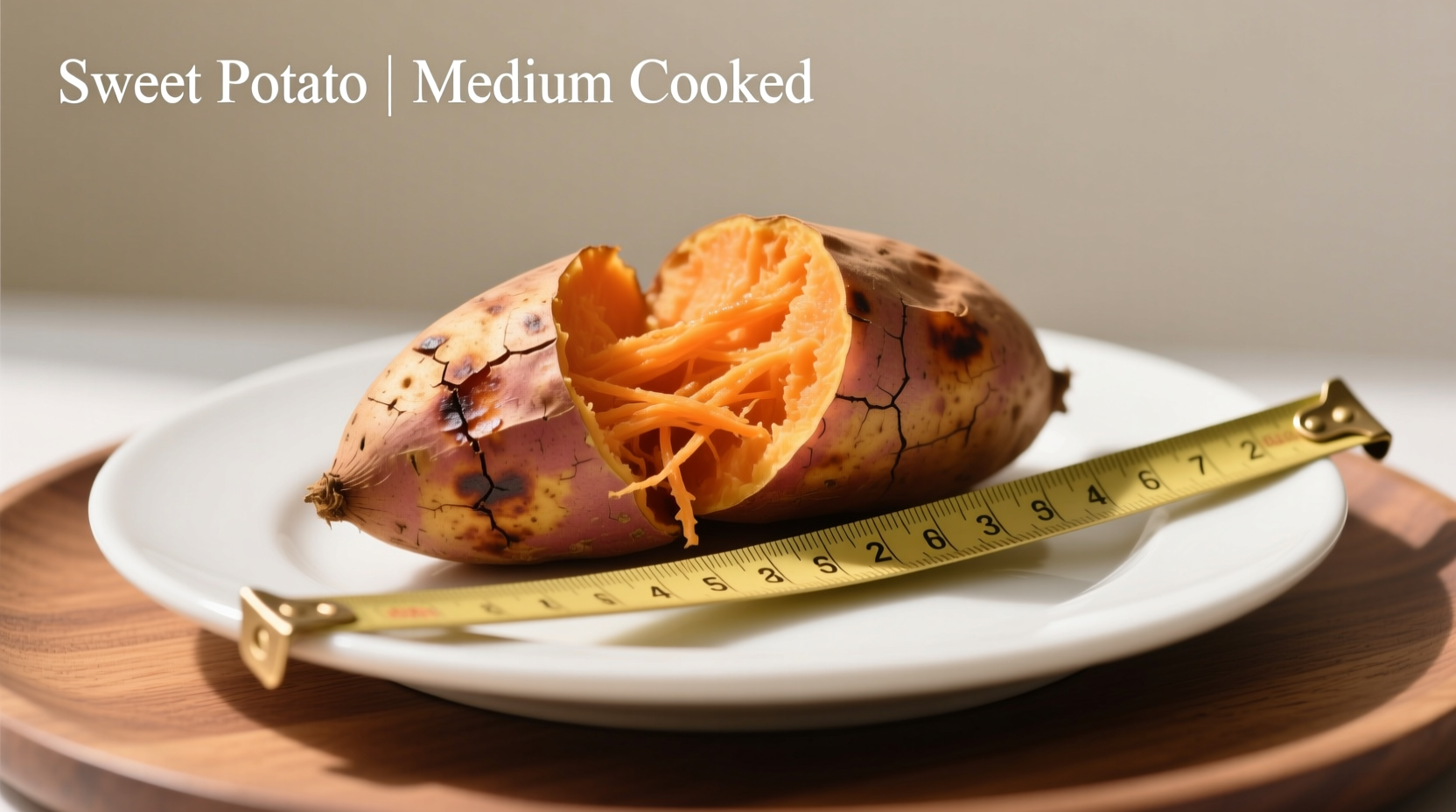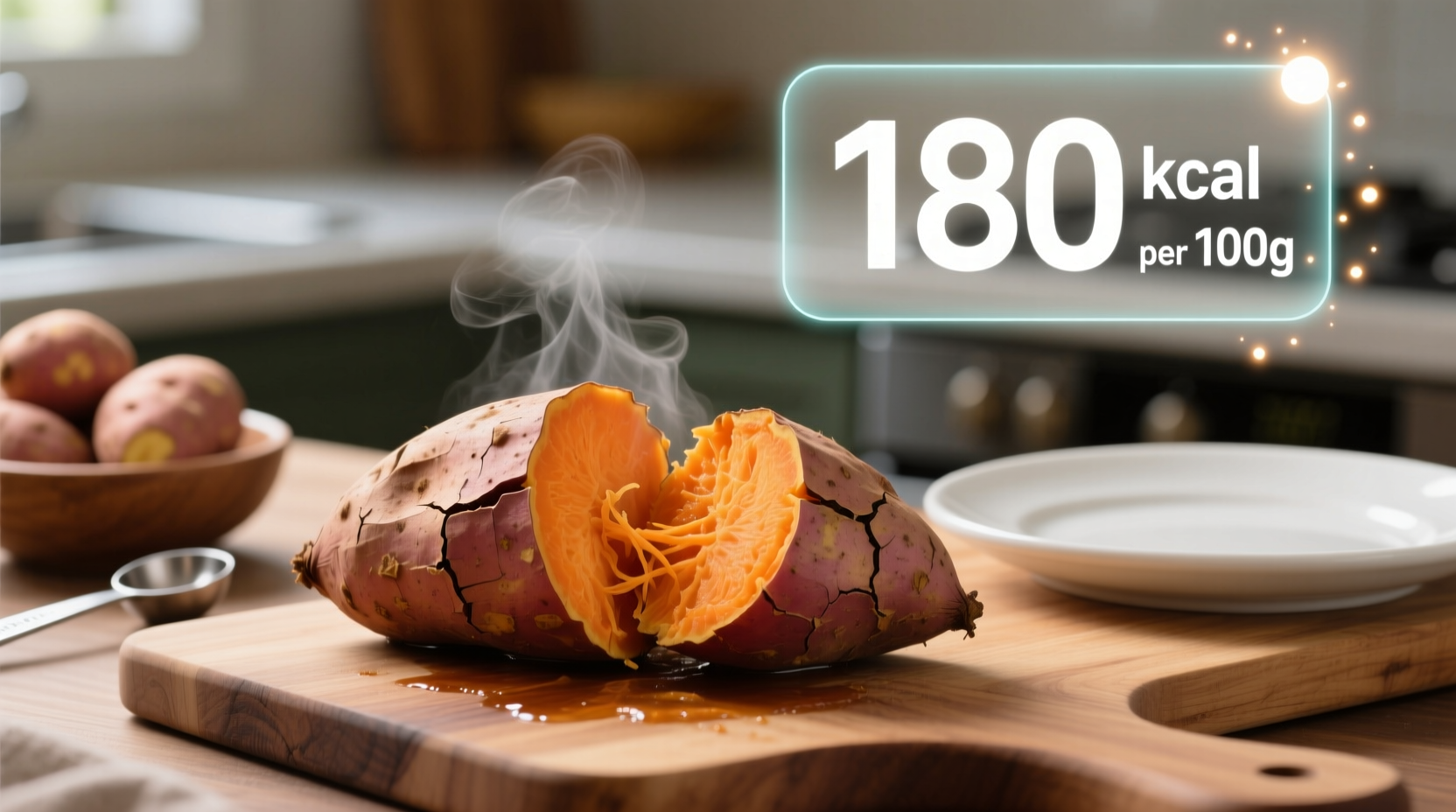Understanding the precise calorie content of cooked sweet potatoes helps you make informed dietary choices without sacrificing flavor or nutrition. Whether you're tracking macros, managing weight, or simply eating healthier, knowing how preparation methods affect calorie density empowers you to optimize your meals.
Exact Calorie Counts by Cooking Method
The cooking technique significantly impacts the calorie concentration in sweet potatoes. Water-based methods like boiling or steaming maintain lower calorie density compared to baking, which concentrates natural sugars through moisture loss.
| Cooking Method | Calories per 100g | Medium Sweet Potato (130g) | Water Content |
|---|---|---|---|
| Boiled (with skin) | 90 | 112 | 77% |
| Baked (with skin) | 95 | 124 | 70% |
| Steamed | 89 | 116 | 78% |
| Microwaved | 91 | 118 | 76% |
Data sourced from the USDA FoodData Central (2023), the authoritative nutritional database maintained by the United States Department of Agriculture.
Why Cooking Method Changes Calorie Density
When you bake sweet potatoes, water evaporates, concentrating the natural sugars and starches. This process increases calories per gram compared to boiling, where some water-soluble compounds leach into the cooking water. The difference isn't substantial for single servings, but becomes significant when tracking precise macros or preparing large quantities.
Boiling preserves more water-soluble vitamins like vitamin C, while baking enhances the bioavailability of beta-carotene. Your cooking choice should balance nutritional priorities with calorie considerations based on your health goals.

Nutritional Benefits Beyond Calories
While calorie count matters, sweet potatoes offer exceptional nutritional value per calorie. A single medium cooked sweet potato delivers:
- Over 400% of your daily vitamin A needs (as beta-carotene)
- Approximately 4 grams of dietary fiber (16% of daily value)
- Significant potassium, vitamin C, and manganese
- Naturally occurring antioxidants
Unlike processed foods with empty calories, sweet potatoes provide sustained energy through complex carbohydrates and fiber. The glycemic index remains moderate (around 63) when boiled, making them suitable for most blood sugar management plans when consumed in appropriate portions.
Practical Portion Guidance for Different Goals
Understanding serving sizes helps you incorporate sweet potatoes effectively into various dietary approaches:
- Weight management: Stick to 100-150g portions (90-140 calories) as part of balanced meals
- Active lifestyle: 200g portions (180-200 calories) provide excellent pre-workout fuel
- Diabetes management: Pair 100g boiled sweet potato with protein and healthy fats
- General health: 1 medium sweet potato 2-3 times weekly offers optimal nutrient benefits
Remember that toppings dramatically affect total calorie content. A tablespoon of butter adds 100 calories, while marshmallows or brown sugar can double the calorie count of your serving. For maximum nutritional benefit, try seasoning with cinnamon, herbs, or a small amount of olive oil.
Historical Context of Sweet Potato Consumption
Sweet potatoes have evolved from traditional staple crops to modern dietary superstars. Originally cultivated in Central and South America over 5,000 years ago, they spread globally through trade routes. In the 20th century, agricultural research developed varieties with enhanced nutritional profiles. Today, the USDA includes sweet potatoes in Dietary Guidelines for Americans as a recommended vegetable choice due to their exceptional nutrient density.
Common Questions About Sweet Potato Nutrition
Many people wonder how sweet potatoes compare to regular potatoes, whether the skin contains significant nutrients, and how preparation affects their health benefits. Understanding these factors helps you maximize the nutritional value while managing calorie intake effectively.











 浙公网安备
33010002000092号
浙公网安备
33010002000092号 浙B2-20120091-4
浙B2-20120091-4